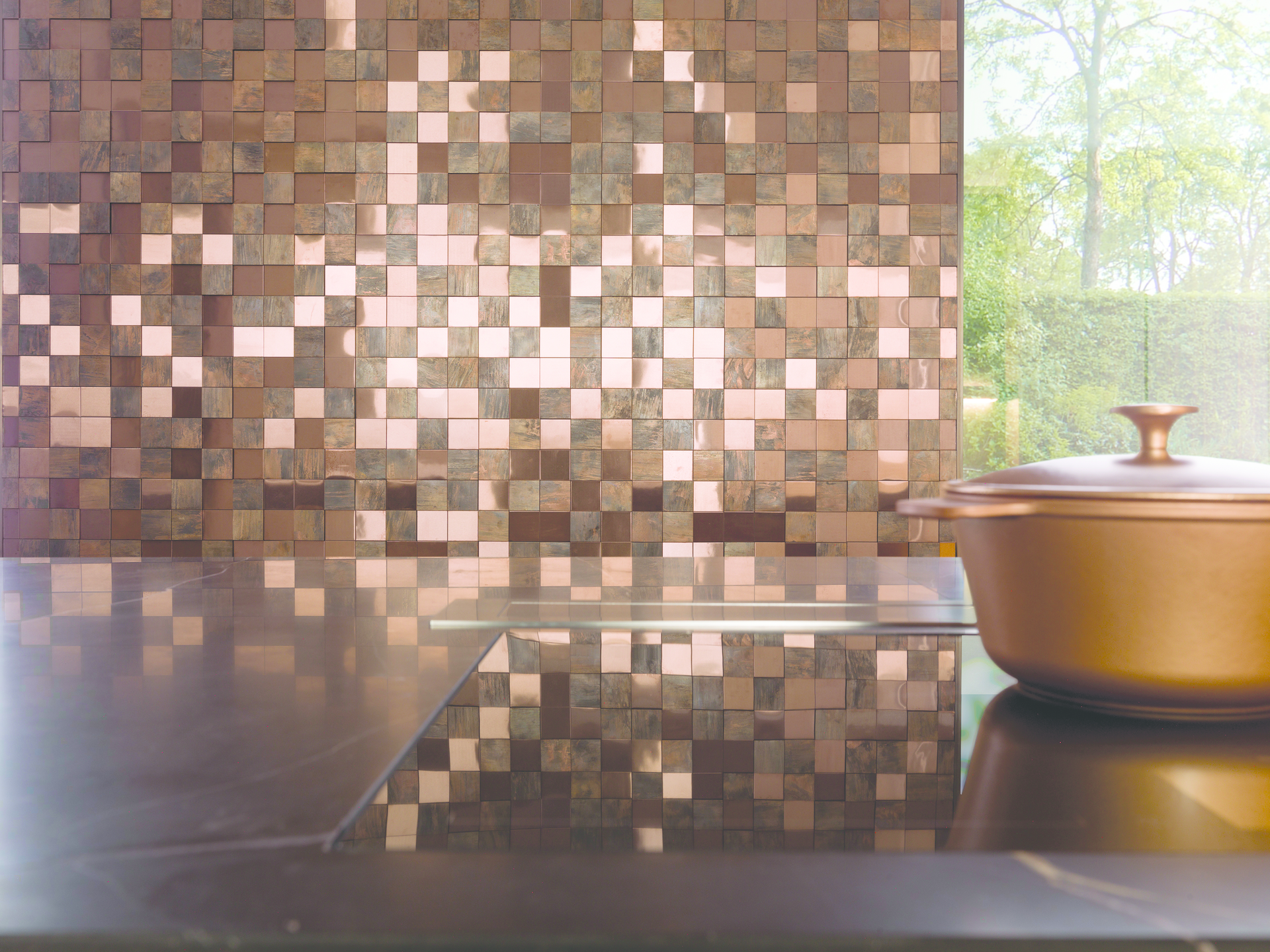
Tiles were used to cover both the interior and exterior surfaces of domes. But the mosaic was not limited to flat areas. After hardening, these panels were assembled on the walls of buildings. In the moraq technique, single-color tiles were cut into small geometric pieces and assembled by pouring liquid plaster between them. The golden age of Persian tilework began during the Timurid Empire. First half of the 15th century, Shah-i-Zinda Tiling from this period can be seen in Ruwanwelisaya and Kuttam Pokuna in the city of Anuradhapura.

Historians consider the techniques and tools for tiling as well advanced, evidenced by the fine workmanship and close fit of the tiles. Tiling was used in the second century by the Sinhalese kings of ancient Sri Lanka, using smoothed and polished stone laid on floors and in swimming pools. Rooms with tiled floors made of clay decorated with geometric circular patterns have been discovered from the ancient remains of Kalibangan, Balakot and Ahladino Like sun-dried bricks, they were made in wooden molds but for bricks with relief decorations, special molds had to be made. Fired bricks are solid masses of clay heated in kilns to temperatures of between 950° and 1,150° C, and a well-made fired brick is an extremely durable object. Making fired bricks is an advanced pottery technique.
Wall tiles skin#
To strengthen walls made from sun-dried bricks, fired bricks began to be used as an outer protective skin for more important buildings like temples, palaces, city walls, and gates. Here the scarcity of stone may have been an incentive to develop the technology of making kiln-fired bricks to use as an alternative. The use of sun-dried bricks or adobe was the main method of building in Mesopotamia where river mud was found in abundance along the Tigris and Euphrates. Mesopotamian craftsmen were imported for the palaces of the Persian Empire such as Persepolis.

575 BC), now partly reconstructed in Berlin, with sections elsewhere. Glazed and colored bricks were used to make low reliefs in Ancient Mesopotamia, most famously the Ishtar Gate of Babylon (ca. The earliest evidence of glazed brick is the discovery of glazed bricks in the Elamite Temple at Chogha Zanbil, dated to the 13th century BC. ( August 2016) ( Learn how and when to remove this template message) You may improve this article, discuss the issue on the talk page, or create a new article, as appropriate. The examples and perspective in this article may not represent a worldwide view of the subject. Thinner tiles can be used on walls than on floors, which require more durable surfaces that will resist impacts. Tiling stone is typically marble, onyx, granite or slate.

Tiles are most often made of ceramic, typically glazed for internal uses and unglazed for roofing, but other materials are also commonly used, such as glass, cork, concrete and other composite materials, and stone. Tiles are often used to form wall and floor coverings, and can range from simple square tiles to complex or mosaics. The word is derived from the French word tuile, which is, in turn, from the Latin word tegula, meaning a roof tile composed of fired clay. In another sense, a tile is a construction tile or similar object, such as rectangular counters used in playing games (see tile-based game).

Alternatively, tile can sometimes refer to similar units made from lightweight materials such as perlite, wood, and mineral wool, typically used for wall and ceiling applications. They are generally fixed in place in an array to cover roofs, floors, walls, edges, or other objects such as tabletops. Tiles are usually thin, square or rectangular coverings manufactured from hard-wearing material such as ceramic, stone, metal, baked clay, or even glass.


 0 kommentar(er)
0 kommentar(er)
